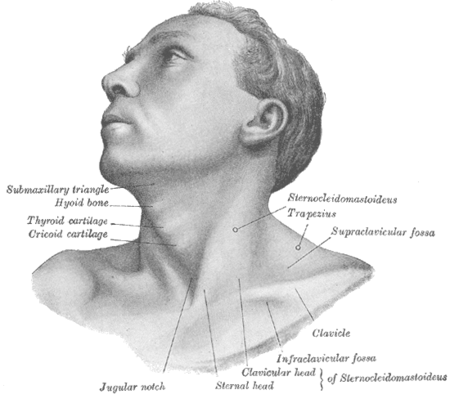nalco group
bone, muscle & joint pain physio
BOOK NOW / WHATSAPP ABOUT YOUR PAIN OR INJURY
- ORCHARD 400 Orchard Road #12-12 Singapore 238875
- TAMPINES 9 Tampines Grande #01-20 Singapore 528735
- SERANGOON 265 Serangoon Central Drive #04-269 Singapore 550265
Home > Blog > Physiotherapy > Conditions > Neck Pain > Shoulder Pain > Torticollis Physiotherapy
Torticollis Physiotherapy

Torticollis refers to a medical condition that happens when the muscle that runs from the breastbone and collarbone up and toward the back of the neck becomes
- tight
- weakened
- or thickened
causing the chin to point toward one shoulder, while the head tilts toward the opposite shoulder.
The most common form of the condition is congenital muscular torticollis (CMT), which affects infants and is generally observed within the first 2 months of life.
In 1992, the American Academy of Pediatrics began their "Back to
Sleep" campaign to reduce Sudden Infant Death Syndrome (SIDS). The
campaign successfully decreased SIDS by 40% in the United States, but it
had an unintended result of contributing to the development of CMT in
approximately 1 in every 250 infants.
Torticollis also can occur in adults. Head tilt in children or adults also can accompany other symptoms of more serious conditions.
If symptoms such as
- trouble breathing
- trouble swallowing
- weakness in the arms or legs
- impaired speech
- difficulty walking
- pins-and-needles feeling or numbness in the arms or legs
- urinary or fecal incontinence accompany the head tilt
seek immediate medical attention.
first of all, What is Torticollis?
Torticollis is the tilt and/or rotation of the head because of tight and weak neck muscles.
It happens when the muscle that runs up and toward the back of the neck (the sternocleidomastoid muscle) becomes tight, weakened, or thickened.
There are 5 forms of the condition:
- Congenital muscular torticollis (CMT) is the most common form of the condition. It affects infants and is generally diagnosed within the first 2 months of life. CMT is often caused by birth trauma, or by sleeping or remaining in 1 position for a prolonged period of time.
- Postural torticollis is diagnosed when the infant’s head tilt comes and goes. It is diagnosed within the first 5 months of life and often is the result of a lack of a variety of positions, such as when the child is consistently placed in a car seat or other baby “container” for extended periods of time.
- Ocular torticollis is caused by a vision problem in one eye, causing the individual to tilt his or her head to see better.
- Spasmodic torticollis (wryneck) occurs in older children and adults. It can be caused by infection, inflammation, trauma, or the side effects of certain medications and/or drugs, such as amphetamines.
- Acute torticollis occurs when a child or adult bends or twists the neck too far, or experiences some type of trauma. There may be pain when the head is moved from side to side or up and down; the neck muscle may be tender to touch.
Abnormalities associated with torticollis include:
- Osseous abnormalities, caused by improper alignment of the cervical spine (at the spinal points C1-C2) when ligaments are damaged due to an infection. The types of infection that can cause this condition include severe upper respiratory, ear, or sinus infections; cervical adenitis; or cervical abscess. Any inflammatory process that irritates the muscles, nerves, or vertebrae—including surgery or trauma—can produce a reflex spasm resulting in this form of torticollis.
- Neurogenic abnormalities, such as a spinal cord tumor or progressive spinal cord diseases, which can cause an acute episode of torticollis, usually in older children. Children may experience headaches, vomiting, and positive neurological signs, like limb weakness (either one side or both sides) and speech difficulties. Seek immediate medical attention if any of these symptoms occur.
Torticollis may lead to additional problems, such as:
- Flattening of the skull (plagiocephaly or brachycephaly) in infants
- Movement that favors one side of the body, affecting the arms, trunk, and hips. This can lead to strength imbalances, such as an elevated shoulder and side-bending of the trunk. This movement pattern can lead to delayed gross motor development
- Developmental hip dysplasia
- Scoliosis
- Limited ability to turn the head to see, hear, and interact with surroundings, which can lead to delayed cognitive development
- Delayed body awareness or lack of self-awareness and interaction
- Difficulty with balance
- Asymmetrical vision changes
Signs and Symptoms
An infant, child, or adult with torticollis may keep the head tilted and toward one side of the body and rotated to the other side of the body, as attempting to straighten the neck is difficult or painful.
For example, if the muscle on the left side of the neck is shortened, weak, or in spasm, the head may tilt toward the left shoulder and rotate toward the right.
There may be tightness in the neck or a noticeable lump in the neck muscle called a pseudotumor. Pain may or may not be present, depending on the type of torticollis involved.
How Is It Diagnosed?
Torticollis in adults is generally diagnosed by a medical doctor.
Experienced pediatric physical therapists may diagnose the need for treatment of congenital muscular torticollis and positional torticollis in infants and children; however, most states in the United States require a prescription from a physician in order for the physical therapist to provide treatment.
Once the type of torticollis is determined, your physical therapist can provide treatment. In most cases, torticollis is a muscular problem, and physical therapists are musculoskeletal experts.
how our senior physiotherapists can help

Regardless of the patient’s age, physiotherapy is the main and primary treatment for all forms of torticollis.
Our senior physiotherapists provide treatment to address the impairments caused by torticollis, and like all medical conditions, early torticullis treatment produces the best outcomes.
If not treated, torticollis can become a permanent condition.
Our senior physiotherapists will work with a child’s caregiver or an adult patient to develop and reach mutual goals.
We will design an individualized treatment plan to:
- Strengthen neck muscles
- Correct muscle imbalance
- Gain pain-free movement (range of motion)
- Improve postural control and symmetry
- Improve the body’s alignment by easing muscle tension
These goals may be achieved through:
- Gentle stretching of the neck and back muscles
- Strengthening of the neck and back muscles
- Massage of the affected area
- Guidance for correct positioning of infants
- Taping to elongate the muscles to facilitate stretching
- A home-exercise program to continue gentle rehabilitation at home
